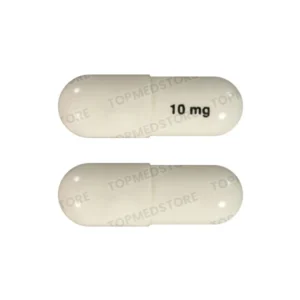Showing the single result
About ADHD
According to Centers for Disease Control and Prevention (CDC), 11% of American children ages 4 to 17 had the attention disorder as of 2011. That’s an increase of 42% between 2003 and 2011. 6.1% of the American children being treated with ADHD, whereas 4% of American adults above 18 years old treated with ADHD. From the data it has been concluded that ADHD is the main concern for American parents.
Neurodevelopmental disorder, Attention Deficit Hyperactivity Disorder (ADHD) mostly occurs in children, but can also be diagnosed in adulthood. Suffering from ADHD shows trouble concentrating or focusing, difficulty in staying organized, being forgetful about completing tasks, and difficulty in sitting still. These behaviors disturb school and home life. It occurs more in boys than girls. It usually starts in the early school age, when a kid faces problems with attention. In case of adults with ADHD, faces trouble in relationship, self-esteem, managing time, being organized, job security, defining goals, etc.
In some cases, ADHD is diagnosed in adulthood. Symptoms in adult are not defined like children. Adults face problems like impulsiveness, difficulty in paying attention, and restlessness.
There are some facts about ADHD:
- Probability of getting affected by ADHD is more in male than in female
- In the lifetime, 13% of the males diagnosed with ADHD, whereas only 42% of the female diagnosed with ADHD
- Symptoms first appear in the age of 3 to 6 years
- ADHD isn’t just a childhood disorder
- The average age of ADHD diagnosis is 7 years old
Causes of ADHD
ADHD is commonly triggered by poor sleep, stress, certain foods & additives, technology, and overstimulation. Exact cause of the ADHD cannot be determined but it can be a combination of following.
- Pyrethroid Pesticides: Higher urine level of organophosphate of children more likely to have ADHD. Pregnant women with higher urine level of organophosphate more likely to have child with ADHD
- Drinking/Smoking in Pregnancy: Exposure of alcohol and tobacco to fetuses leads development of ADHD
- Lead Exposure: Lead is the toxic substance for development of the brain. In the study, it is proved that children with ADHD have more amount of lead in their blood
- Food Additives: Some artificial food colors and preservatives like sodium benzoate linked hyperactivity in children
- Eating Habits: Diets high in fat, refined sugar, and sodium were double the risk of ADHD
- Genes: The genes you inherit from your parents can be a factor affecting ADHD
Diagnosis of ADHD
Initially, discuss with your general physician and observe the person for longer time and notice behavior. If it consistently showings same problems, then consult experts like pediatrician for children and psychiatric for adults.
Children with ADHD, not able to finish tasks, easily get distracted, could not listen carefully, make, careless mistake, in constant motion, lose things, and squirm and fidget. Adults with ADHD are found depress and anxious.
For more proper diagnosis follow the steps below:
Step 1: Physical examination– Find out other possible causes for symptoms
Step 2: Gathering Information– Prepare questionnaire about family and personal medical history, current medical issue, and history of observed symptoms
Step 3: Psychological tests– Perform some psychological tests to evaluate symptoms
Symptoms
The symptoms of ADHD are well defined in children as well as teenagers and it can be easily noticed before age of 6 years old. Symptoms can be observed at school or at home or at playground. Following are such symptoms:
Self-centered behavior, interfering, trouble waiting their turn, emotional turmoil, hot temper, fidgetiness, problems playing quietly, unfinished tasks , lack of focus, frequent mood swings , avoidance of tasks needing extended mental effort, daydreaming, unorganized, impulsiveness, trouble, coping with stress, poor planning, and absent-mindedness.
Treatment for ADHD
Atomoxetine is approved to treat attention deficit hyperactivity disorder in children, adolescents, and adults. It balances natural substances like neurotransmitters in brain and helps to increase ability to concentrate, stay focus and pay attention. This medicine is manufactured, marketed, and sold in the United States by Eli Lilly under the brand name Strattera as the hydrochloride salt. Medicine is composed as opaque white, blue, red and gold conventional tablet and packed as 10 pills per blister pack. Available dosages in the form of tablets are Atomoxetine 10 mg, Atomoxetine 18 mg, Atomoxetine 25 mg, and Atomoxetine 40 mg. You can see effectiveness in 4 to 8 weeks of the treatment.
Atomoxetine has little known abuse potential, which is its primary advantage over the standard stimulant treatments for ADHD. The medicine significantly, reduces inattentive and hyperactive symptoms. 40% of the patients who were treated with Atomoxetine experienced effectiveness over ADHD. A further 2–4 weeks may be required for the full therapeutic effects to be seen. In 2002 FDA approved Atomoxetine for the treatment of ADHD, because it was initially intended as antidepressant.
The medicine is non-toxic in overdose. It recommended that activated charcoal prevents further absorption of the drug in case of overdose. The empirical formula of Atomoxetine is C17H21NO. Discuss with your physician in case you are suffering from adrenal problems, problems related to bladder/prostate, heart problems, high blood pressure, glaucoma, kidney, liver disease or mental disorder before starting this medication. This medicine is not recommended for pregnant or breastfeeding women. It is advisable not to consume alcoholic beverages or drugs like marijuana.

